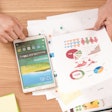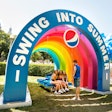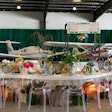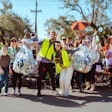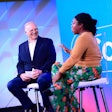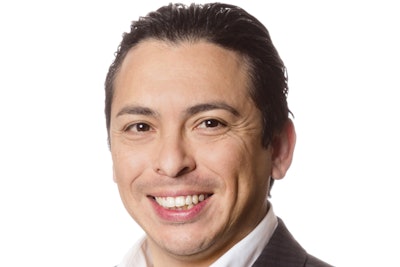
The future of business comes down to shared experiences, and the role of event hosts now includes both facilitating that experience and learning from what is being shared. That’s the message of Brian Solis, blogger, speaker, author, and principal of the Altimeter Group, a research and consulting firm. His latest book, out this spring, is What’s the Future of Business: Changing the Way Businesses Create Experiences (wtfbusiness.com). His previous books include The End of Business as Usual, about the emergence of the connected customer and how businesses must adapt, and Engage, a reference guide for businesses on building and measuring success in social media. In a recent conversation, Solis shared his thoughts on how technology is driving the evolution of business and society, as well as how event pros can make the most of these new opportunities.
“Big data” is a buzzword lately. What does it mean, and why is it important?
The majority of data that exists in the world has been produced in the last few years. It’s hard to grasp, considering the world has been producing data for decades. But that’s just a sign of how much the digital lifestyle has taken over our world. Your smartphone, your social networks, your car—all of these things are producing data. Many of them are connected to the Internet, so that data is constantly tracked, and it’s going into this big repository in the sky. The thing that makes it so big is the sheer volume of data that’s produced, but also the sense of being overwhelmed with how to tackle that data to make sense of it. There’s analysis paralysis. People aren’t sure what to do with all the data that exists today, let alone all of the new data that’s coming out.
What is the implication of big data for marketers and planners?
This is data that can be tracked to help understand how people are moving through an event, how people are talking about an event. It provides the ability to get insight into behavior as well as sentiment. People will always express themselves publicly through Twitter, Facebook, Foursquare. All of this data can give you a sense of what this event was like for that individual. One simple example: When Facebook hosts events, they embed R.F.I.D. into their badges. So as you walk around the event, your badge is picked up by various displays, and, with your permission, it is automatically broadcasting information about you. Facebook knows where you went and where you didn’t go. So for the next event, Facebook can start to optimize the design or the layout of the event space itself.
[PULLQUOTE]
You’ve used the term “digital Darwinism.” What do you mean by that?
The one thing that is constant is the evolution of technology, whether it is in business or in our personal lives. Digital Darwinism is the concept that technology in our society is evolving faster than our ability to adapt. Think about some of your favorite brands that are no longer here. That’s because they failed to adapt not just to technology, but to the new digital lifestyle. As consumers become more connected, they become more empowered; they become more informed, and as a result, their expectations escalate.
What do planners need to do to keep up with these changes?
I introduce the concept of the audience with an audience of audiences. If we go back to this idea that everyone is living the digital lifestyle now—I have Facebook, I have Twitter, I have YouTube—in each of those [platforms] I have a group of people I am connected to. Some people might be connected to thousands, others to hundreds. Once you are connected, you feel this psychological need to constantly update your status and keep your community engaged. So if you think of it from an event-planning standpoint, people are actively sharing every moment of that experience, good or bad. And that’s powerful. So as an event planner, you don’t want to just be a victim of that. You want to affect those conversations; you want to be part of those conversations, part of those experiences. You need to think of yourself not just as a planner for what’s taking place in these four walls, but as an event planner for what is taking place in cyberspace at the same time. What is it you want people to share? What kind of experiences do you want people to have in those four walls that transcend those walls and get out in the social network? Put experiences throughout the room that are going to get people to Instagram something. Bring people together around this moment. There’s this thing in social media called FOMO—fear of missing out—so your peers see that they should have been at that event. So they go next year.
You participate in a lot of conferences and events as a keynote speaker. Have you seen the impact of these concepts in that role?
I remember being in the speaker room for so many years where speakers were frustrated that no one was looking at them on stage. People were looking at their mobile phones or their tablets. And I remember thinking, this is exactly the opportunity you are missing. You have an audience that is connected, and they are sharing everything you are saying, good and bad. So instead of fighting it, embrace it. Change the way you present, change the way you talk, change the slides you show, so you can talk to and through people at the same time. Now, it’s not about the 500 people in the room. It’s about the 30,000 or 40,000 we can connect with in one moment. So as an event planner you can’t rely on your speakers figuring that out. You have to help them.
Is this what you mean in your newest book, when you say the future of business comes down to shared experiences?
Yes, it comes back to the idea of the audience with an audience of audiences. You know that if they have a decent experience, they are all going to share that. The idea that the future of your business comes down to shared experiences should not surprise you. So start to design the experience, the event, based on what it is you want people to share, to think, to say, to do. It’s a powerful notion that you become an event planner for experiences, not just for the event itself. People are constantly telling you what they like and don’t like, what they appreciate and don’t appreciate, and your job as an event planner is to let that touch you, let that inspire you to do better.
What advice do you have for companies that are still not comfortable with not being able to control the conversations on social networks?
Businesses today think they are the primary resource. They broadcast press releases and pretty Web sites and marketing materials. They end up talking at audiences. This is our message, these are our values, this is why you should come to the event. They are not taking account of the audience of the audience. When you understand that, you change the way you talk. People start to listen to you differently. Then you have the opportunity to earn a position as a resource. That’s going to take blog posts and videos and talking to influencers telling them what your story is. You want to provide the information they need—videos, infographics, data points—anything that will make for genuine conversations and make everyone having those conversations sound and look smarter. People don’t go to any one source. In consumerism, the number of sources people use to make decisions is doubling every year.
You produce a conference in New York each fall known as Pivot. Have you incorporated some of these ideas?
It’s a future-of-technology conference. We’ll design everything for sharing. The playlist for the event is on Spotify so people can subscribe to it and talk about it. The food and drink [selection] is really cleverly designed so people will want to Instagram it or share it on Facebook. All of the speaker sessions are 15 to 20 minutes, so they are tweetable and Facebook-able so we can cater to the attention span of the connected individual. There’s power everywhere, there’s Internet everywhere. These are things we think about to keep that connected set very happy, entertained, engaged, and actively sharing. Every year we’ve been able to attribute growth to that sharing. Then after the conference, once a month we get together on Twitter, or we have a webinar with very connected speakers, so we are always pulling in new people.
How do you gather information that helps you design your event?
I look at conversations related to conferences that I admire and see what people think or feel about the experiences they are having there. I look at how people talked about my conference last year, and I start to think about how I can apply that. You can’t assume what people want is the right thing to do; you have to look for the nuances and opportunities between the lines. The other thing I do is host conversations with thought leaders. I create an advisory board for the show of people who are incredibly connected who would be my ideal attendees and seek input from them.
It sounds like you are suggesting that planners need a new mindset?
The first thing many think is, the event is mentally exhausting as it is, and now you want me to keep going? Yes. To keep people engaged, to keep them entertained, to keep them interested is an “always on” job now. It’s always on, it’s always evolving, and that’s a good thing.









